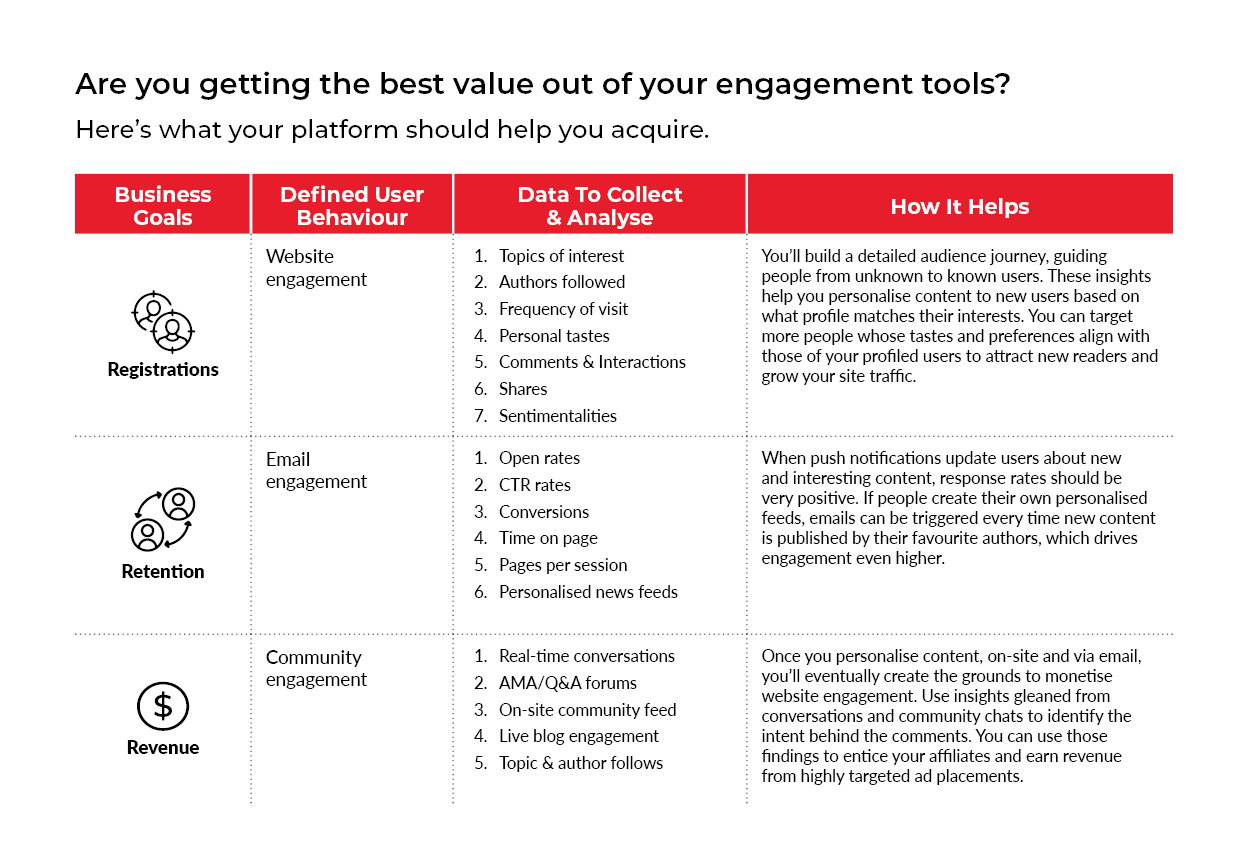When a person has a negative experience with a company, their most logical course of action is to cut off all interactions with that business. In the same sense, having troll-infested commenting sections on your company’s website or app can drive people away from engaging experiences and content.
Keep in mind that 13% of people will abandon an online service altogether if it’s associated with online harassment in any way.
The reality is that people are less loyal to brands that allow toxicity to exist in their online social spaces.
Companies that keep their commenting spaces free of toxicity and trolls with an advanced moderation system allow users to have positive interactions around their brands, leading to serious, tangible advantages for publishers.
Accessing the advantages of well-moderated social spaces
Think of it this way: Users that have positive social experiences with your brand are more likely to stick around longer to interact with your company’s website. And that translates directly into having more rich, consented, first-party data that you can draw from your audience’s activity.
This data is key to your company’s success — and you can collect it easily on your website through interactive tools, like commenting solutions.
But not all interactive, community-building solutions are strong enough to help media companies shape positive user interactions. Nor do they all offer full access to first-party user data.
To keep social spaces free of toxic behaviour, publishers should take on moderation tools that can instantly understand and block all 6.5 million variations of offensive words and adapt as language evolves. It’s also just as important to make sure that extensive first-party data can be drawn from any social tools used.
Publishers that use advanced moderation services to reinforce positive audience experiences can then improve business results by accessing in-depth user data, including the following information types:
Audience interests
While monitoring content performance and visits on a page may have been enough for media companies in the past, today, publishers need to dig deeper to meet audience expectations.
“[What] sets successful newsrooms apart is that they do not use data to merely track content but to better understand their audience.” writes Marcela Kunova, an editor at Journalism.co.uk. “Listening to their users helps them discover their needs and then tailor the news products and services to make the audience happy.”
And well-moderated social experiences can help media companies unlock a massive amount of information about what their users are interested in.
Some of this data can be pulled from comments that express what your audience wants to see more or less of. You can also monitor content topic and author follows as well as user engagement levels around different stories to see what’s resonating with your community the most.
Predictive knowledge
If you want to consistently earn your audience members’ attention, you’ll have to meet their expectations even as their needs and wants evolve.
After all, 64% of people will happily exchange their data for relevant experiences. Plus, almost half of consumers are disappointed when media companies don’t suggest good content recommendations.
There’s an easy way to meet your consumers’ expectations, though. You can simply use engagement data to predict their future behaviours.
More specifically, your audience members will leave a trail of enriched data as they have positive interactions with your company’s social tools. From there, engagement data can be collected, analyzed and used to predict how likely users are to subscribe, unsubscribe and interact with specific content topics.
This advanced information can be fed into different tools and strategies, allowing publishers to offer captivating personalized experiences, subscription offers and re-engagement campaigns.
Insight on user habits
There’s a clear connection between your community’s everyday habits and their loyalty toward your brand.
Greg Piechota, the International News Media Association’s researcher-in-residence, explains that “[creating] habits in your readers is critical to maintaining them as subscribers and reducing churn.
“Ultimately, the more you can encourage users to get in the habit of visiting your website or app, the more likely they are to become loyal to your brand.
You can find out whether or not your audience members are developing worthwhile habits based on the frequency of their positive interactions across your digital properties.
The impact of positive user interactions on your company
Currently, 500 leading publishers worldwide could lose up to 52% of their revenue as third-party cookies disappear just because they’re missing out on critical first-party data.
Meanwhile, hosting safe and positive user experiences online can bring publishers 35% more comments — and that means more actionable data and related revenue for your company.
So by making sure that your audience’s interactions across your digital properties remain positive, you can maximize your ability to collect fully consented data and strengthen business results.















